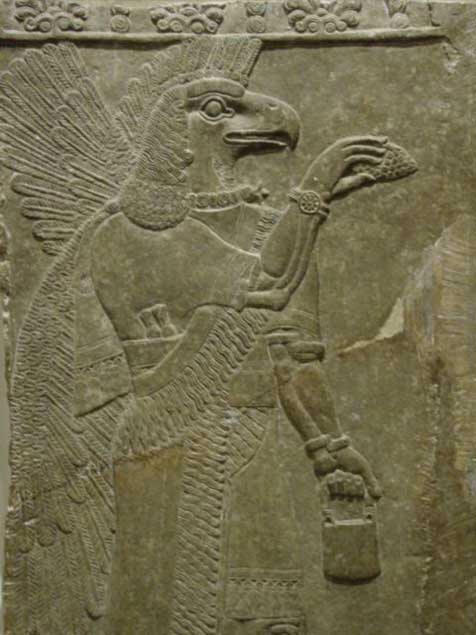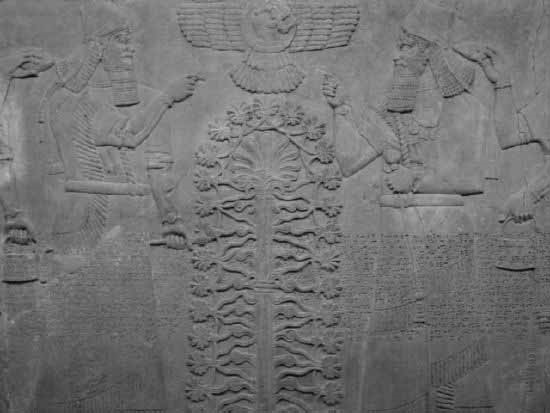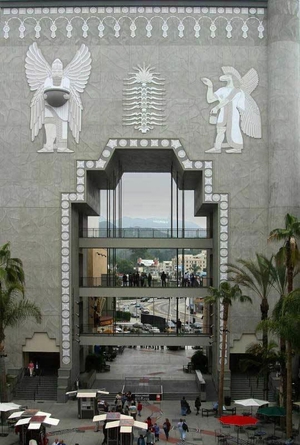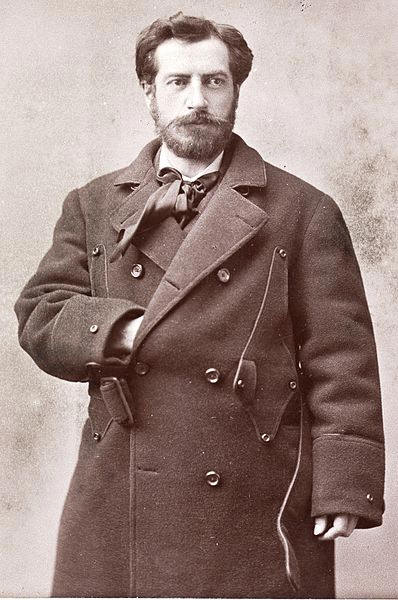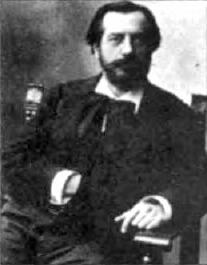Fabian, Fellow Traveller or Free Agent? The Strange Case of David Mitrany

By Will Banyan, Copyright © March 2005 (updated October 2007)
Author’s note: This essay was completed in early 2005 in response to repeated entreaties from “Winston”, webmaster of the Modern History Project to explore his contention that David Mitrany was in fact a Fabian, evident in his associations with a number of prominent Fabians (detailed below). In subsequent correspondence “Winston” conceded that my paper, addressing his particular concern was “actually rather good”, but he took exception to my “arrogant attitude”, apparently evident in the final paragraph. I would contend that my final paragraph was a plea not to let “guilt-by-association” guide our understanding of whether or not Mitrany was a Fabian, but to instead focus on the facts of what he believed as opposed to his social companions. Some of the internet addresses have been updated if they have been archived, but others appear to be unrecoverable.
One of the more persistent flaws in much of research into the alleged conspiracy to establish a “One World Government” or “New World Order”, in the view of this author, is the tendency to assume the loyalties and beliefs of certain individuals solely on the basis of the organisations they belong to or are associated with, rather than their actual and proven beliefs. Unless these links are examined with care false assumptions about the philosophies of key figures can be constructed resulting in a distorted picture of the N.W.O. People are no longer seen as individuals, possessing free will, but become mere pawns of a larger seemingly omnipotent cabal. At the same time, however, it is still a fact of life that the people we associate with can sometimes be a measure of what we stand for. Determining whether that association stems from convenience or common purpose can be difficult, especially if it is assumed the purpose of those associations is to pursue a secret grand strategy, thus making all evidence to the contrary suspect.
The case of David Mitrany, the subject of the partner essay “Outflanking the Nation-State: David Mitrany and the Origins of the ‘Functional’ Approach to the New World Order”, is certainly illustrative. Was Mitrany a free agent who consorted with British socialists out of expedience and convenience, or, alternately, a sympathiser, if not an “agent” of the Fabian Society and its program of achieving socialism through gradualism? Mitrany’s association with a number of leading Fabians and other British socialists, from 1912 through to the 1940s, is indisputable and perhaps of greater significance than originally acknowledged in “Outflanking the Nation-State.” More importantly, these associations raise pertinent questions about Mitrany’s own beliefs and motives. In particular it challenges us to explore the truth of Mitrany’s claim that as a “matter of principle” he had decided not to tie himself “to any political party or ideological group” and to instead “work with any and all of them for international peace”, accounts for his collaboration with these groups.[1]
Mitrany’s career in the company of socialists of varying hues follows a clear path: educated at the London School of Economics (LSE); member of the League of Nations Society; member of the Labour Party Committee on International Questions; a journalist at the Manchester Guardian (and later a frequent contributor); and participant at two Fabian Society conferences. He also mentions his connections with key British scholars who were either Fabians or members of the libertine ‘Bloomsbury Set’, such as Graham Wallas, L. T. Hobhouse, Harold Laski, Leonard Woolf and John Maynard Keynes. Viewing the extent and apparent depth of these connections, it is no small effort to embrace the conclusion Mitrany must have shared their socialism, if he had not already been transformed into an “agent” of the Fabians thanks to his education at the LSE, as some might surmise. Mitrany though has long sought to convince people to the contrary, as he told his friend Felix Frankfurter[2] in a letter in May 1925:
An understanding of the issues surveyed here would not be complete unless we are able to define the meaning of Fabianism. There are many definitions out there, some more alarming than others, but they give us a prism through which to more properly explore whether Mitrany’s connections translated into beliefs and actions.
The Editor of the Modern History Project has defined Fabianism in the following somewhat contentious terms:
Yet, other sources quoted by the Spartacus website suggest the education provided by the LSE was pluralist rather than “more socialist”. A diary entry from Beatrice Webb on 18 November 1903, lamenting the resignation of the LSE’s first Director, W. A. S. Hewins, credits him with helping to obtain and keep “the cooperation of men of diverse views and conflicting interests.”[13] Then former British Prime Minister Clement Atlee, in his memoir, recalled how as a tutor and lecturer at the LSE he had “plenty of time for social work and also socialist propaganda, for it was a fundamental rule of the School that no one could be restricted in venting his political opinions.”[14] Though Atlee was clearly able to vent his socialist opinions, we can presume non-socialist students must have had a free reign as well. And finally, though some might reject it as inherently biased, an essay on the Fabian Society website, “A History of the Fabian Society” claims the LSE “has never been turned into the ‘centre for collectivist-tempered research’ which [the Webbs] wanted.”[15]
Mitrany’s account also suggests the LSE had not become the ideologically pure institution of Sidney Webb’s socialist dreams. Instead Mitrany lauds his two teachers, Leonard T. Hobhouse (1864-1929) and Graham Wallas (1858-1932) as “true searchers, allergic to the slightest whiff of dogmatism.” Mitrany did not attribute to Hobhouse and Wallas the specific idea of functionalism, only that their instruction on theoretical issues pushed him in that direction. In particular Mitrany credited Hobhouse with introducing him to the idea one should treat “politics as a science” and strive to uncover “the relation of things” rather than make predictions. This concept, according to Mitrany, was “in a way the central philosophical idea behind the whole functional theory.”[16]
But for those who are reluctant to abandon the idea of Mitrany being a Fabian proxy, it is also worth nothing that the relationship between the Fabian Society and Mitrany’s teachers, Wallas and Hobhouse, was cordial rather than close by the time he entered their tutelage. In the case of Hobhouse, although close to the Fabians during the 1890s he had “never joined the society and later became a fierce critic of its elitism, imperialism and opportunism, showing particular hatred for George Bernard Shaw’s flippant authoritarianism.” More importantly, according to the profile of Hobhouse by David Howarth from Cambridge on the British Liberal Democratic Party website:
So, in sum, according to these accounts, the two figures Mitrany actually credits with shining “the first light towards the ‘functional’ outlook on things social and political” had either never joined (Hobhouse) or had severed their membership (Wallas) with the Fabians; and more importantly both had drifted away from the philosophies of Shaw and the Webbs well before Mitrany came into their presence. Moreover, as the conflict between Hobhouse’s “deeply internationalist” outlook and the overtly racist imperialism of the Fabian leadership reveals, the more refined internationalist sentiments of Mitrany bears little resemblance to the obscene doctrines endorsed by Shaw, the Webbs and H.G. Wells.
These policies included their calls for non-white races to be eliminated, or denied self-governance forever if need be. This fitted into a strikingly imperialist mindset that ranked non-Europeans as inferior and expendable. As fellow Fabian Leonard Woolf later ruefully observed although “a progressive, even a revolutionary in some economic and social spheres”, when the British Empire was concerned, Sidney Webb “was a common or garden imperialist conservative.”[22] The Webbs openly advocated denying self-rule to non-white colonial subjects in perpetuity.
The novelist H.G. Wells, in fact, was invited to join the Fabians on the strength of his 1901 book Anticipations of the Reaction of Mechanical and Scientific Progress Upon Human Life and Thought. In this piece of Darwinian futurology Wells had predicted the creation of a global “New Republic” by a scientifically educated elite – “a sort of outspoken Secret Society…an informal and open freemasonry” – that would usurp the rule of the blundering politicians. This movement, wrote Wells, would create “a world state with a common language and a common rule”, but this would require the elimination of the unfit. This latter category included the “whole masses of the human population” who were “inferior in their claim upon the future” and who “cannot be given opportunities or trusted with power.” Wells’s New Republicans would have “little pity” for these “silly creatures”; and would not “hesitate to kill” the masses should the elite’s tolerance be “abused”. Shaw was particularly taken with this mad and genocidal thesis and later extended an invitation to Wells to join their clique.[23]
At the time Mitrany was attending the LSE, these imperialist views – also represented in Shaw’s own tract Fabianism and the Empire (1900) – dominated Fabian thinking on international affairs. Yet there is no indication in his education at the LSE that Mitrany was imbued with any such imperialist fervour or seduced by H.G. Well’s dystopian thesis. It cannot be denied Mitrany’s functionalist theory was influenced by the teachings he received at the LSE, but those lessons appear to have been somewhat removed from the essential characteristics of Fabianism.
Author’s note: This essay was completed in early 2005 in response to repeated entreaties from “Winston”, webmaster of the Modern History Project to explore his contention that David Mitrany was in fact a Fabian, evident in his associations with a number of prominent Fabians (detailed below). In subsequent correspondence “Winston” conceded that my paper, addressing his particular concern was “actually rather good”, but he took exception to my “arrogant attitude”, apparently evident in the final paragraph. I would contend that my final paragraph was a plea not to let “guilt-by-association” guide our understanding of whether or not Mitrany was a Fabian, but to instead focus on the facts of what he believed as opposed to his social companions. Some of the internet addresses have been updated if they have been archived, but others appear to be unrecoverable.
A Question of Character
One of the more persistent flaws in much of research into the alleged conspiracy to establish a “One World Government” or “New World Order”, in the view of this author, is the tendency to assume the loyalties and beliefs of certain individuals solely on the basis of the organisations they belong to or are associated with, rather than their actual and proven beliefs. Unless these links are examined with care false assumptions about the philosophies of key figures can be constructed resulting in a distorted picture of the N.W.O. People are no longer seen as individuals, possessing free will, but become mere pawns of a larger seemingly omnipotent cabal. At the same time, however, it is still a fact of life that the people we associate with can sometimes be a measure of what we stand for. Determining whether that association stems from convenience or common purpose can be difficult, especially if it is assumed the purpose of those associations is to pursue a secret grand strategy, thus making all evidence to the contrary suspect.
The case of David Mitrany, the subject of the partner essay “Outflanking the Nation-State: David Mitrany and the Origins of the ‘Functional’ Approach to the New World Order”, is certainly illustrative. Was Mitrany a free agent who consorted with British socialists out of expedience and convenience, or, alternately, a sympathiser, if not an “agent” of the Fabian Society and its program of achieving socialism through gradualism? Mitrany’s association with a number of leading Fabians and other British socialists, from 1912 through to the 1940s, is indisputable and perhaps of greater significance than originally acknowledged in “Outflanking the Nation-State.” More importantly, these associations raise pertinent questions about Mitrany’s own beliefs and motives. In particular it challenges us to explore the truth of Mitrany’s claim that as a “matter of principle” he had decided not to tie himself “to any political party or ideological group” and to instead “work with any and all of them for international peace”, accounts for his collaboration with these groups.[1]
Mitrany’s career in the company of socialists of varying hues follows a clear path: educated at the London School of Economics (LSE); member of the League of Nations Society; member of the Labour Party Committee on International Questions; a journalist at the Manchester Guardian (and later a frequent contributor); and participant at two Fabian Society conferences. He also mentions his connections with key British scholars who were either Fabians or members of the libertine ‘Bloomsbury Set’, such as Graham Wallas, L. T. Hobhouse, Harold Laski, Leonard Woolf and John Maynard Keynes. Viewing the extent and apparent depth of these connections, it is no small effort to embrace the conclusion Mitrany must have shared their socialism, if he had not already been transformed into an “agent” of the Fabians thanks to his education at the LSE, as some might surmise. Mitrany though has long sought to convince people to the contrary, as he told his friend Felix Frankfurter[2] in a letter in May 1925:
But I have never suffered from dogmatism. My interest is to see some development in the organization of peace, and I care little how it is done and by whom it is done as long as it takes us to that end.[3]What then is the truer picture? Was Mitrany a Fabian, fellow traveller or free agent? Through a review of relevant sources, including the personal accounts of the various Fabians, socialists and fellow travellers we know Mitrany consorted with, as well as his own writings on socialism; hopefully a clearer picture will emerge.
What is Fabianism?
An understanding of the issues surveyed here would not be complete unless we are able to define the meaning of Fabianism. There are many definitions out there, some more alarming than others, but they give us a prism through which to more properly explore whether Mitrany’s connections translated into beliefs and actions.
The Editor of the Modern History Project has defined Fabianism in the following somewhat contentious terms:
“Fabianism” by definition is the strategy of gradual implementation of socialism through stealth and the infiltration of academia, the media, and the government with sympathisers and opinion shapers who would eventually form the “Open Conspiracy” that Wells described, as opposed to the violent revolution advocated by Marx and Lenin.[4]This definition is accurate in parts, especially the emphasis on gradually implementing socialism through the infiltration of socialist ideas into the elite strata of society. Other sources, although querying the notion there was a clearly defined and consistently articulated Fabian socialist ideology, confirm this basic element. For example, according to an essay at “The Wood” website:
The Fabians…stressed that social democracy would not [occur] through revolution and violence as Marx theorised but rather from slow and steady democratic movement. Their primary belief was that capitalism, at its very root, was unfair to the majority of people and an unfit economic system for a modern society. Their solution, the one stressed by nearly all socialists, was that the workers should own the means of production. For the Fabians, legislation, protest, and localized action was the way to achieve this and offered the greatest potential for a cure for the plight of the proletariat. They chose education and gradual acceptance of socialist thought, instead of forced, violent indoctrination.[5]According to an essay by Robert Sullivan on the Modernist Journals Project website:
The Fabians preferred the method of permeation or…the “honeycomb” effect. Instead of direct confrontational action, for example, by aligning itself with working-class trade-unionism or other militant socialists, Fabianism sought to change the system from within, and would achieve this by a process of infiltration. They would, through their great intellectual weight, “persuade” members of government (whatever the Party), civil servants, and other people in power, that the amelioration of the plight of the less fortunate in society was a necessary just cause.[6]These definitions of Fabianism are based; it should be recognised, not upon any unauthorised access to Fabian doctrine or other revelations, but on what they published for the entire world to see. As John Taylor Gatto observes: “Fabian strategy and tactics have been openly announced and discussed with clarity for nearly a century, whether identified as Fabian or not.”[7] Prominent Fabian G.D.H. Cole, for example, provided this insight into Fabianism in the short essay he wrote on the subject for the 1932 edition of the Encyclopaedia of the Social Sciences:
In every field the characteristic Fabian policy has been that of permeation. In accordance with their doctrine of continuity the Fabians set out to develop existing institutions by permeating with this or that element of their doctrine those who had power to influence policy, e.g. the civil service, the political parties, the professions, the administration of business, and local government. It was part of their creed that no sharp line could be drawn between socialists and nonsocialists and that many who would not call themselves socialists could be persuaded to help with particular reforms for making socialism.[8]So, in sum, Fabianism is best described as strategy for achieving socialism through gradualism or the permeation of the socialist idea into all the nooks and crannies of government, business and politics that matter. Mitrany’s functionalist concept could be described as “Fabian”, though only insofar as it is essentially a gradualist program. But was he a Fabian socialist? Did the Fabians Mitrany associated with manage to convince him of the virtues of greater regulation of the economy, increased taxation, and ultimately public ownership and administration of industries and services? That is the most important question.
Mitrany at the London School of Economics
Mitrany attended the London School of Economics and Political Science as a student from 1912 to 1914. In his memoir, Mitrany counts his studies there in sociology and political science as crucial to the development of functionalism:Without a doubt the first light towards a “functional” outlook on things social and political came from my two teachers at the London School of Economics, in its early days, when it was small but intensely alive, and truly free intellectually.[9]Mitrany’s characterisation of the LSE as being “truly free intellectually” is interesting as it appears to clash with the assumption of some analysts that the LSE had been established in 1895 by Fabian Society co-founders Sidney and Beatrice Webb, for the express purpose of transforming its students into adherents of socialism. A quote from the diary of Beatrice Webb, dated 21 September 1894, carried on the Spartacus website, appears to support this more sinister interpretation. Noting how her husband had become the executor to ₤10,000 willed to the Fabian Society from a recently deceased, but apparently wealthy and eccentric member, Beatrice recorded Sidney’s “vision” of how that money would be used:
[T]o found, slowly and quietly, a “London School of Economics and Political Science” – a centre not only of lectures on special subjects, but an association of students who would be directed and supported in doing original work.[10]At first glance the description of the students being “directed and supported in doing original work” seems to imply the LSE’s progeny would receive little more than instruction in the Fabian Socialist program. The use of the term “original work”, however, seems to rule out indoctrination. A similar conclusion can be drawn from Edward Pease’s comments in his book The History of the Fabian Society (1918) that the Fabian trustees agreed to use the money to fund the LSE because they considered a “thorough knowledge” in economics and political science to be a “necessity for people concerned with social reconstruction.” They believed it was “essential that all classes of public officials should have the opportunity of learning whatever can be known of economics and politics…”[11] Again all very vague and uncontroversial. The only firm statement of any such intent to brainwash students is Sidney Webb’s declaration on the purpose of LSE to “teach political economy on more modern and more socialist lines than those on which it had been taught hitherto, and to serve at the same time as a school of higher commercial education.”[12]
Yet, other sources quoted by the Spartacus website suggest the education provided by the LSE was pluralist rather than “more socialist”. A diary entry from Beatrice Webb on 18 November 1903, lamenting the resignation of the LSE’s first Director, W. A. S. Hewins, credits him with helping to obtain and keep “the cooperation of men of diverse views and conflicting interests.”[13] Then former British Prime Minister Clement Atlee, in his memoir, recalled how as a tutor and lecturer at the LSE he had “plenty of time for social work and also socialist propaganda, for it was a fundamental rule of the School that no one could be restricted in venting his political opinions.”[14] Though Atlee was clearly able to vent his socialist opinions, we can presume non-socialist students must have had a free reign as well. And finally, though some might reject it as inherently biased, an essay on the Fabian Society website, “A History of the Fabian Society” claims the LSE “has never been turned into the ‘centre for collectivist-tempered research’ which [the Webbs] wanted.”[15]
Mitrany’s account also suggests the LSE had not become the ideologically pure institution of Sidney Webb’s socialist dreams. Instead Mitrany lauds his two teachers, Leonard T. Hobhouse (1864-1929) and Graham Wallas (1858-1932) as “true searchers, allergic to the slightest whiff of dogmatism.” Mitrany did not attribute to Hobhouse and Wallas the specific idea of functionalism, only that their instruction on theoretical issues pushed him in that direction. In particular Mitrany credited Hobhouse with introducing him to the idea one should treat “politics as a science” and strive to uncover “the relation of things” rather than make predictions. This concept, according to Mitrany, was “in a way the central philosophical idea behind the whole functional theory.”[16]
But for those who are reluctant to abandon the idea of Mitrany being a Fabian proxy, it is also worth nothing that the relationship between the Fabian Society and Mitrany’s teachers, Wallas and Hobhouse, was cordial rather than close by the time he entered their tutelage. In the case of Hobhouse, although close to the Fabians during the 1890s he had “never joined the society and later became a fierce critic of its elitism, imperialism and opportunism, showing particular hatred for George Bernard Shaw’s flippant authoritarianism.” More importantly, according to the profile of Hobhouse by David Howarth from Cambridge on the British Liberal Democratic Party website:
Hobhouse’s first major political work, The Labour Movement (1893), was strongly collectivist, calling for the profits of industry to be appropriated to consumers in the form of the cooperative movement, trade unions and local and national government, and for a steeply graduated income tax, higher death duties and the taxation of ground rent. Its political doctrine was closer to Green’s organicism than to Mill. But Hobhouse soon saw that collectivism in its Fabian form was liable to turn into the glorification of the state and the pursuit of conformity in the name of equality. Hobhouse was also deeply internationalist and was revolted by the Fabian endorsement of the Boer War. His New Liberalism was, above all, the result of his disillusion with Fabian socialism.[17]As for Mitrany’s other teacher at LSE, according to Peter Clarke, an academic from Cambridge, during the 1880s Graham Wallas had found in the Fabian Society “the sort of intellectual milieu where he felt at home.” Although “overshadowed by the reputation of [Bernard] Shaw and the Webbs, Graham Wallas remains the forgotten man of the early Fabian Society, which he…joined in May 1885.” Wallas was offered the position of Director of the LSE when it was first formed, but declined preferring instead to teach, eventually becoming Professor of Political Science. But while his “academic career blossomed, his Fabian commitment waned.” As Clarke observes:
Wallas finally resigned from the Fabian Society in 1904 because of Shaw’s attempt to associate it with protectionism, another Conservative policy. The root cause was a divergence between the manipulative and authoritarian temper which Shaw and the Webbs increasingly displayed and Wallas’ Liberal outlook. In 1898 Wallas had married Ada Radford, a woman of strong literary interests, and a firm Liberal (they had one daughter). The Wallases drifted apart from the Webbs and the Shaws, though remaining on civil terms.[18] [emphasis added]A more detailed account of Wallas’ split with the Fabians is provided by Martin J. Wiener’s account Between Two Worlds: The Political Thought of Graham Wallas (1971). Wiener observes how in the 1890s the leading Fabians, especially Sidney Webb, were abandoning the idea of democracy in favour of more exclusive rule by the elite. For Webb and Shaw, democracy “was a means of procuring consent by the populace to the measures of the elite.” Walls, though, remained a believer in popular participation in government.[19] Government, he believed, should be responsive to popular will; it should not be built on the acquiescence of the masses to the will of an elite. But the differences ran deeper with Wallas becoming “more sceptical of the self-sufficiency of collectivism.”[20] He also clashed with the Webbs over education policy, and with Shaw over his pro-imperial tract Fabianism and the Empire (1900) and his protectionist tract Fabianism and the Fiscal Question (1904) which rejected free trade. In February 1904 Wallas had resigned from the Fabians noting how in regard to the Tariff Tract “the vast majority of the Society was in agreement with the Executive and against me.” He asked though that they consider him an “unattached friend of the Society.”[21] The friendship would not last, however, and he drifted away. The overall pattern is clear though: Wallas escaped the rigid dogmas of the Webbs and Shaw, and established himself as an independent thinker.
So, in sum, according to these accounts, the two figures Mitrany actually credits with shining “the first light towards the ‘functional’ outlook on things social and political” had either never joined (Hobhouse) or had severed their membership (Wallas) with the Fabians; and more importantly both had drifted away from the philosophies of Shaw and the Webbs well before Mitrany came into their presence. Moreover, as the conflict between Hobhouse’s “deeply internationalist” outlook and the overtly racist imperialism of the Fabian leadership reveals, the more refined internationalist sentiments of Mitrany bears little resemblance to the obscene doctrines endorsed by Shaw, the Webbs and H.G. Wells.
These policies included their calls for non-white races to be eliminated, or denied self-governance forever if need be. This fitted into a strikingly imperialist mindset that ranked non-Europeans as inferior and expendable. As fellow Fabian Leonard Woolf later ruefully observed although “a progressive, even a revolutionary in some economic and social spheres”, when the British Empire was concerned, Sidney Webb “was a common or garden imperialist conservative.”[22] The Webbs openly advocated denying self-rule to non-white colonial subjects in perpetuity.
The novelist H.G. Wells, in fact, was invited to join the Fabians on the strength of his 1901 book Anticipations of the Reaction of Mechanical and Scientific Progress Upon Human Life and Thought. In this piece of Darwinian futurology Wells had predicted the creation of a global “New Republic” by a scientifically educated elite – “a sort of outspoken Secret Society…an informal and open freemasonry” – that would usurp the rule of the blundering politicians. This movement, wrote Wells, would create “a world state with a common language and a common rule”, but this would require the elimination of the unfit. This latter category included the “whole masses of the human population” who were “inferior in their claim upon the future” and who “cannot be given opportunities or trusted with power.” Wells’s New Republicans would have “little pity” for these “silly creatures”; and would not “hesitate to kill” the masses should the elite’s tolerance be “abused”. Shaw was particularly taken with this mad and genocidal thesis and later extended an invitation to Wells to join their clique.[23]
At the time Mitrany was attending the LSE, these imperialist views – also represented in Shaw’s own tract Fabianism and the Empire (1900) – dominated Fabian thinking on international affairs. Yet there is no indication in his education at the LSE that Mitrany was imbued with any such imperialist fervour or seduced by H.G. Well’s dystopian thesis. It cannot be denied Mitrany’s functionalist theory was influenced by the teachings he received at the LSE, but those lessons appear to have been somewhat removed from the essential characteristics of Fabianism.




